Jack Rossi’s memoir of his experience with MCS, being forced outdoors and his insight into the Vermont landscape, health and healing and the fragile planet we inhabit
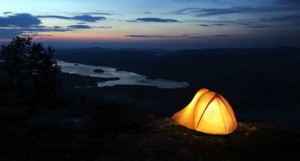 At a certain season of our life we are accustomed to consider every spot as the possible site of a house. I have thus surveyed the country on every side within a dozen miles of where I live.
At a certain season of our life we are accustomed to consider every spot as the possible site of a house. I have thus surveyed the country on every side within a dozen miles of where I live.
~ Henry D. Thoreau, Walden; or, Life in the Woods
After my first visit to the health center in western Massachusetts I left for home with explicit instructions from the nurse practitioner to spend at least two weeks in the fresh air. The car’s cab had filled with the late afternoon heat from the two-hour sunbath in the parking lot. As I entered it my mind filled with a mix of apprehension and hope about the new direction my life was about to take, what home actually was for me anymore, and more importantly, what it was about to become.
With all the discipline I could muster I was to stay outside. The nurse practitioner’s directives were clear; she didn’t mean spend some time outdoors, she meant remain completely outdoors. This meant no house, no amenities, no stores and if at all possible, no car. I was about to start a two-week long camping experience in my own back yard.
Lacking the necessary equipment to begin this regimen, Sandi and I stopped in West Lebanon, New Hampshire to purchase a tent and other accommodations essential to beginning a life outdoors. By this time entering any retail store was an invitation to aggravated symptoms and a setback to this new mission.
At EMS, our first stop, we parked the car just outside the main entrance, perpendicular to a long, granite-edged grass island dotted with evenly spaced maples. As Sandi went into the store to review the inventory, I got out of the car, sat down on the grass and propped myself against a tree. As the store’s dark reflective glass door swung slowly shut and she disappeared into the invisible void of the building, I had a sudden profound sense of isolation. I hadn’t purposely stayed back; I couldn’t follow. I felt a closer association with the hypothetical panting dog, locked in a car behind partially opened windows in the parking lot, waiting for his ‘master’ to return, than with the various shoppers milling about the sidewalk and shops. I envied their freedom, yet knew they had no concept of it, taking it completely for granted as I’d certainly always done. After several minutes of detached viewing I dropped the self-pity and experienced a very different, almost paradoxical, perception. I felt like an invisible, yet enlightened being looking out on the mass of humanity. I was watching a time lapsed mechanized play set where cars zipped by on the main road, others slowed to search for parking spaces and their inhabitants moved in and out of buildings with no apparent purpose or awareness. For that brief moment, I was disassociated from the human race, feeling a little like a god invisibly looking down on all the quirks, foibles and perceived business of humanity.
Fifteen minutes later Sandi came to the door and signaled me over to report her findings. They had several tents adequate in size and price but none with enough open ventilation. I’d been warned that the new nylon would most likely be a problem for me as it gradually off-gassed from the tent fabric, so my hope was to find something with a lot of openings and venting to ensure a healthy supply of fresh air. EMS offered a quality product; I was disappointed we’d not been able to find something there. Considering other options I begrudgingly acquiesced to Sandi’s intuition to drive a half-mile down the street to K-Mart.
My expectation of finding anything there was low but after ten minutes in the store Sandi came out and asked me to step briefly inside to take a look at what she’d found. An aged, elf-like salesman named Bob met me just inside the door. Sitting on the linoleum-tiled floor next to the customer service desk, he had set a neatly folded, six-sided screen tent in its black carrying bag. With bursting pride and a perpetual smile he pointed to the photograph of the tent on the bag and then raised a scale model replica of the tent from the shelf behind him and began describing the ‘fine details’ of the structure. I’d have been impressed with this kind of service in a Mercedes showroom, never mind K-Mart. The tent was perfect for the situation: open on all sides, watertight roof fabric, easy setup and affordable. It was the perfect solution, supported by commendable salesmanship. After a sincere thank you to Bob, we left the store with the tent, two blue, nylon folding chairs and a nine-volt lantern. This was the beginning of a new relationship with the outdoors for me, and by default, for Sandi too. It was also the first of many situations we’d encounter and learn from by simply listening to and trusting an inner nudge.
Where to place the tent on our property posed its own set of problems. Privacy wasn’t an issue; the house sat 150 feet back from the road. A passing vehicle had only a short opportunity of time to gaze into the yard between a mass of white pines on one side of the drive and falling topography on the other. The front yard offered the flattest terrain and easiest access to the house, so we set up there.
The tent didn’t have a floor. A black nylon skirt connected the mesh sidewalls with the ground. The ground was soft mown lawn, so we used old wool car blankets over a plastic ground tarp as an extra cushion and moisture barrier. Space and the threat of damage from the elements dictated what and how much we could furnish the tent with. The house being only a short distance away and containing fresh supplies of most anything we could use made it relatively easy to find a comfortable balance. We brought out a single Hollywood bed frame and mattress and centered it in the tent. A variety of sheets, blankets and quilts for covers were on hand to adjust to varying night temperatures. I hung the lantern from a ceiling hook in the center of the tent and Sandi brought out a covered Tupperware container to hold valuables like eyeglasses, wallet and the nutritional supplements I was taking. A flashlight, a couple books and a few spare clothes completed the task.
That first night was a surreal experience. I hadn’t ‘camped out’ in my yard since I was a kid. Even then, those were moderately enjoyable experiences at best, never mind now as an adult. While I love the outdoors, I readily admit that at my age, I enjoy my comfort.
As a child though, I lived in the then, rural town of Avon, Connecticut. I remember seemingly endless summer days spent with my friends exploring the woods, fields and streams within walking distance of our homes. I searched for, handled and made frequent pets of, much to my parent’s dismay, box turtles, painted turtles, garter and ring-necked snakes, toads, frogs and salamanders. I was fascinated by the unusual flora: Indian pipe, wintergreen, princess pine, growing in shaded bosques behind my house, that others never seemed to notice. I was a bit of a fearless adventurer.
At nine years old a friend and I set out on a five plus mile bike trek to the base of Talcott Mountain. We crossed a small stream, hedgerow and a large field, slipping under a barbwire fence just in time to escape an angry charging bull, and then proceeded up the face of the mountain to King Philip’s cave. The cave, named after the legendary Wampanoag war chief, was a large circular hollow set some twenty-five feet up a sheer rock wall at the summit of the mountain. Local legend had it that Philip used the cave as a hideout during King Philip’s War in the late 1600’s. We somehow managed to scale the wall and enter the cave. It was truly a hole as opposed to a cave and never quite lived up to my imagined expectations. After about an hour at the cave we headed back down, made it home dirty and exhausted by late afternoon, and were both immediately grounded for an extended period of time, but the adventure left me feeling wholly satisfied.
My family left Avon and moved to Warwick, Rhode Island when I was in sixth grade. My father had accepted a transfer within his engineering firm from Hartford to Providence. After only six months away, he determined he didn’t like the new position or Providence (I never knew which) and we moved back to Connecticut.
Instead of returning to Avon, we settled in nearby West Hartford, a more suburbanized town closer to his office in Hartford. Walking home from school on an early fall afternoon with a few new acquaintances, one of them spotted a medium size garter snake sunning on the gray stone riprap by the edge of a brook we were passing. Reacting partly with surprise and fear, he practically went into convulsions, pointing, waving his arms and yelling, seemingly having never seen, and certainly having never handled, a snake before. The snake quietly slipped beneath the rocks and we continued walking, but his excitement lingered the entire walk home. These kids were being raised in contrived public parks, equipped with swimming pools, tennis courts and playgrounds, where organized sports programs and structured games filled hours of their time. These amenities and programs were considered town privileges. But these privileges came with a cost. Instead of exploring the natural world around them, they were ignorant of it. They misunderstood and even feared it. While the travel distance between these two towns was short, but the longer I lived there the more I realized the cultural difference was vast, and I didn’t see the addition of money and development as an advantage.
I’d hiked an extended portion of the Appalachian Trail a few years prior to moving to Vermont and each day of vigorous hiking ended in a tent. But in that situation I was too tired to care about any minor discomforts and slept quite soundly cocooned in my sleeping bag with only a thin neoprene pad between the ground and me. The tent was a necessity: a shelter for respite. Something to inhabit only long enough to refresh myself before setting out on the journey again. Now with the kids, cats, and the general comforts of home beckoning me from a few yards away, I was mentally challenging a lifetime of habit and routine, rationalizing why I had to be out here. The reality that I couldn’t physically enter my own house anymore or my body would react as if to an alien environment was a huge hurdle I continued to trip over.
Sandi and I have shared a queen size bed since we were married some twenty-five plus years ago. Whether it was one person wanting the light on to read while the other wanted it dark, a bad case of garlic breath or someone kicking the other in their sleep, we often debated whether the bed was big enough. Yet, outdoors we adjusted quickly to sharing a single bed. My general observation is that things tend to feel smaller outdoors than indoors, maybe due to their perceived scale against the larger landscape, but for some reason our single bed seemed perfectly sized and comfortable. Maybe the cool, fresh air provided for better sleeping conditions with little stirring. Like interlocking puzzle pieces, it seemed once we found complementary positions, we stayed that way through the night. The embracing position we were almost compelled to take because of the limited space became an unspoken symbol of her support for my situation and my appreciation of that support.
We’d come up with a creative, albeit temporary, solution for sleeping in the tent, but I also needed a place to work. Richard’s barn sat slightly elevated some one hundred feet off the front door of the house. It was a dirt-floored hexagonal post and beam construct with five enclosed sides. The sixth side, adjacent to the drive and opposite the house entrance, was an large, open bay. The roof hung equally over all sides, so the open side benefited by what served as an extended canopy. The interior structure angled upward in a circular pattern of exposed beams, at the top of which was a windowed cupola.
Except for the cupola the barn had no windows, so the interior remained rather dark and damp. Although not visible, this condition produced a fair amount of mildew and mold, evident to me whenever I passed by or through the structure. The opening though was large, good for collecting breezes and its southeasterly orientation picked up warming sun in the morning hours. If I compromised by positioning the office close enough to the opening to make use of these positive benefits, yet far enough under cover to protect my table from the weather, it might possibly work.
I laid a couple of heavyweight, flattened cardboard boxes on the dirt floor, onto which I set my two black filing cabinets containing only pertinent documents. My drafting board, a solid core birch door with a straightedge and protective board cover attached to it, rested on top of the filing cabinets. A small picnic table, set adjacent to the desk, held drafting supplies and a heavy-duty yellow extension cord from the one outlet in the barn powered my electric pencil sharpener, eraser, light and radio. A slick design office it wasn’t, but it served my need for a functional, and more importantly, safe working environment.
It was mid-July and the weather remained clear, dry and warm, if slightly humid, for almost a week. The inevitable first day of precipitation eventually came in the form of drizzle and a light breeze. We happened to be in the tent reading and discovered almost immediately that although the roof of the tent was water resistant, the screened sides offered no protection from blowing rain. This was relatively light precipitation, we weren’t getting soaked, but even the moderate air movement was enough to bring the outdoors in. Fine moisture was beginning to bead on anything close to the tent walls, including my skin. Fortunately it was daytime, so adjusting to the weather was relatively simple. Pillows, bedding and accumulated amenities like books, i-Pod, and writing pads went indoors. These we tucked in the main foyer just inside the door for easy access back out once the weather cleared. We rolled up the wool blankets on the ground, put them under the bed and covered the mattress with a clear plastic tarp, then found our respective positions. Sandi went indoors, I found the cover of the small front porch. Immediately my sense of freedom, already severely compromised, practically vanished. Chemical sensitivities prevented me from going in; rain prevented me from staying out. My freedom of choice hadn’t disappeared but each option had a price I was unwilling, and often unable, to pay.
I stayed on the porch. An open-sided but covered entryway, just large enough to provide shelter. This space was to become a common transitional friend. I had a chair, a book or radio and time to wait out the weather. But a bigger problem had been revealed. Having already had to evacuate my house, I didn’t want to have to also leave this new, albeit simple, dwelling at the whim of the weather. We brainstormed our immediate options but nothing seemed ideal.
A weatherproof tarp suspended over the entire tent with adequate overhang seemed plausible but in reality a blowing wind could easily drive rain in from several yards away. The practicality of a tarp expansive enough to work in this way was eliminated by the complexity of supporting such a large structure while also protecting it from being swooped up or torn apart by the wind. We considered attaching a tarp to the side of the barn and nestling the tent in below it, but because the barn was octagonal, the roof shed water in the direction of its corresponding wall on all sides, so any water shedding the roof was destined for the tarp. This, along with several logistical and terrain issues, precluded this option as well. I contacted commercial tent companies that catered to larger events like weddings but the expense of such extravagance was prohibitive for any period of time.
Ultimately we remained in the front yard for three more weeks, covering the bed and essentials when rain threatened and occasionally relocating to a less than desirable covered basement entrance at night, which provided its own set of challenges.
Through the seemingly endless weeks of denial, fear and fighting I’d hit a wall. I had nowhere to go – all I could do was surrender to the situation. I couldn’t will myself better nor could I do most of the activities consistent with daily life that I had previously enjoyed and taken for granted.
The thought of going inside, even for a couple hours, slumping on to the couch with a bowl of popcorn and watching a movie was now a distant, savored memory. The simple pleasures of life I had taken for granted became increasingly valuable; a warm bath, a good book and a soft chair, turning on a light without drawing hundreds of bugs, hell, just shelter from the rain.
My physical body felt damaged and my connection to the world fragmented. My awareness began to shift, gradually turning inward, finding more commonality with my spiritual side than my physical and it was in this consciousness that I gradually surrendered. It was as if my physical body had lost its life force, my attention simply began to fall away from it. It wasn’t so much a conscious shift as a natural one, almost instinctual. My will was no longer my own. I began to trust my own inner guidance to help me understand why this was happening and what could be learned from the experience.
On any given night, lying in my bed cocooned in the screen tent at the field’s edge of the front yard, I could smell the fumes from the new insulation and plywood as acutely as if I were locked in a closed room with them. It’s been reported that a chemically sensitive person’s sense of smell becomes greatly enhanced from that of a non-sensitized person. People in this state told me they felt like they “could see smells” or metaphorically, “smell the dung on an ant’s leg a thousand feet away”. It sounds crazy but when I was in this state those descriptions weren’t gross exaggerations. My sense of smell had become so heightened I could look at something a great distance away and seem to smell it. Things like new carpeting, perfume, gasoline; strong scented chemicals that one would expect to be noxious, were. But I was reacting with equal intensity to scents like laundry detergent in newly washed clothing, the interior of our seven year old Volvo, and the damp soil floor of our barn.
Activities I’d taken for granted much of my life were now difficult or impossible to perform. Driving my car in the summer heat with the windows shut and the air conditioning on would make me sick. I had to roll the windows down for fresh air, further isolating me from friends and family. As passengers in the vehicle their comfort level was compromised by the unabated gust of warm air, messed hair, and high decibel traffic noise from passing interstate traffic.
As an end to the day reprieve I often enjoyed finding a comfortable spot on the couch with Sandi, making a big bowl of buttered popcorn and watching a good movie. I tried this in the tent a couple times using the small portable TV/DVD or my laptop but I could never remain comfortable long enough. Worse yet, the bright light of the screen in the otherwise dark tent attracted a menagerie of insects so rapidly and in such numbers it seemed they were being sucked through the screen by a vacuum cleaner.
One night, feeling especially discouraged about my condition and the possibility of never regaining my past health, I began to fall asleep. As I did my attention shifted inwardly and I felt, what I can only describe as, a living thread between spirit and body. My attention shifted from the physical to the spiritual, resulting in a state where the two seemed to perfectly blend and interrelate. Even more, I had the awareness of being able to let go of that physical connection at will and simply leave this life, yet still maintaining full consciousness as viewed from a higher state. It was a completely natural feeling and surprisingly, not an unfamiliar one.
I suddenly understood how a dying person can hold on to life seemingly indefinitely while waiting for a loved one to reach them to say a final goodbye, then, with that final fulfillment, simply let go and fade away. Or, how another, not willing to let go because of certain unfulfilled obligations, hangs on long beyond any expectations. My maternal grandparents were relatively healthy and happy people into their early ninety’s, when my grandmother suffered a sudden stroke and died the next morning. I watched helplessly as my grandfather seemingly gave up on living and died a few months later.
I’ve always believed and accepted that I had free will, a personal choice, at every juncture in life and the responsibility to accept what comes with my choices. I was amazed to learn that this choice could extend to whether or not to leave it as well. This wasn’t a mental understanding. I can’t rationalize it or convince anyone of its validity. It came through the act of experience. It’s simply my truth.
Jon was now three weeks from beginning his first year at Connecticut College. We’d spent the last eighteen years in a very close relationship. Knowing I couldn’t be with him in my own house as he was in this transition period and that our relationship would be forever changed once he left hit me at the core of my being. As I lay in my bed that evening, glasses off – vision distorted by my near-sightedness and the tight-woven screen of the tent, I looked out across the yard at our long ranch house silhouetted against the black mountain and sky. The high, narrow, north-facing windows were a luminous fuzzy gold and gave the house the appearance of a large ship passing in the night where I floated nearby unnoticed, aimless and lost.
“Goodnight dad and mom,” Jon or Lane would call nightly from the front door before shutting down the house.
“Goodnight guys, wake us in the morning if we’re still asleep”, I called back, trying to maintain continuity in our daily family life but knowing full well we’d be up with the serenade of robins, chickadees, grosbeaks and sparrows at the first gray light over the eastern tree line.
Only a few years ago my usual evening routine was to make up or read several stories to Jon and Lane at bedtime (the Frog and Toad series being our favorite) after which I’d often fall asleep at the bottom of one of their beds exhausted until my own internal clock, or Sandi’s hand on my shoulder, woke me to return to my room. Had the kids been younger this routine would be one more joyful activity this condition would slash from my life and that would have broken my heart. But Jon was now eighteen and Lane fifteen; and though this situation must have seemed quite peculiar to them, in their own way they were enjoying the independence it offered them. It was seeing that small blessing in situations like this that kept me moving toward health.
For years I’d kept a day planner for noting business and personal appointments. As the summer progressed my health deteriorated, my ability to work diminished and the planner took on an unexpected function. Instead of monitoring a business schedule, it became a daily log of the intensity of my symptoms. I established a simple numerical system ranging from one to ten. Ten represented the worst possible scenario: the most severe symptoms. Days that still pain me to remember; when my skin burned as if sunburned, my brain turned to mush, my memory faded. I was disoriented, depressed and confused. My lungs hurt to breath, my heart seemed to pound irregularly in my chest, my eyesight lost focus and my hand shook to hold a pen. One, on the other hand, represented only the mildest symptom. I didn’t feel 100% but why I didn’t was often undetectable and unknown. I might feel off but I was able to function fully in every capacity.
At the end of each day I’d register the number that best summarized the day’s average experience. Initially, this number ranged between eight and ten, indicating daily fluctuations in misery. Granted an eight was better than a ten, but comparing that degree of difference was much like comparing different levels of hell. Call it what you will, it still felt like eternal suffering. Eventually, the twenty-four hour fresh outdoor air I was taking in, and the various detoxification efforts I had made a daily priority, began to yield noticeable results. Gradually I began to see the number eight become much more prevalent than a nine or ten, then sevens, sixes and fives began to predominate.
There would be spikes back up to higher numbers, usually brought on by any number of unexpected events and frequently the direct result of work-related mishaps. This was all new to me. I had no reference for the multitude of potential dangers I could become entangled in. For instance, I might unknowingly walk on to a site recently sprayed with the herbicide, Roundup. A couple whiffs and I’d be debilitated for hours. Or once, I foolishly wore sandals to a site and walked across a lawn recently treated by a professional lawn service. My feet felt like they were on fire and I had immediate dizzy spells. Several times I had to meet a client or architect in a house under construction. Not so bad if the house was open framed to the outdoors, but once sealed and insulated, it could be devastating. But every encounter was a learning experience helping to increase my vigilance and need for self-protection.
Other times the reason for these spikes was unclear. I was told early on by several medical practitioners that healing for MCS was a tediously slow, up and down process. The measure of progress could best be described by visualizing a model of an oscillating wave moving along a slightly raised inclined plane. If reactors could be avoided and the body allowed to heal there would be a gradual improvement over an extended time but daily, weekly, maybe monthly fluctuations were to be expected.
In the study of sculpture and three-dimensional space, forms are often described in concave and convex terms. Concave is bowl-like and embracing. It becomes a refuge. Convex is the opposite; the form is continually falling away like the surface of a ball. Any given point on that surface is the highest and most exposed. These terms also aptly describe the duality of my perceived environment as it related to my state of health. Symptom-free my world holds and embraces me. This comfortable concave space has familiar visual boundaries that contain my sense of community. In this framework I’m able to interact with others nestled in a warm sanctuary. Burdened by my worse symptoms, this environment inverts itself, leaving me feeling exposed, alone and vulnerable. The world looks the same but it’s not. Familiarity exists only in ghost-like imagery, based on past experiences with this place, but holding no gravity. It’s like an astral reflection of something I knew – the form is there but there’s no substance. In this convex space everything seems to fall away from me, my bearings are confused and all warmth is extinguished.
read more:
Introduction
Chapter 1 ~ The Wonder Years
Chapter 2 ~ Evolution of an Illness
Chapter 3 ~ Changes
Chapter 6 ~ A New Beginning
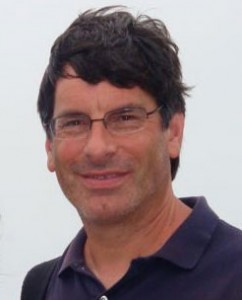 Jack Rossi is principal and owner of Jack Rossi Landscape Architecture, Woodstock, VT, a landscape architectural firm, specializing in sustainable landscape design. He’s also an adjunct professor of landscape architecture and sustainable design at Vermont Technical College and author of the forthcoming book on multiple chemical sensitivity and the environment, InsideOut.
Jack Rossi is principal and owner of Jack Rossi Landscape Architecture, Woodstock, VT, a landscape architectural firm, specializing in sustainable landscape design. He’s also an adjunct professor of landscape architecture and sustainable design at Vermont Technical College and author of the forthcoming book on multiple chemical sensitivity and the environment, InsideOut.






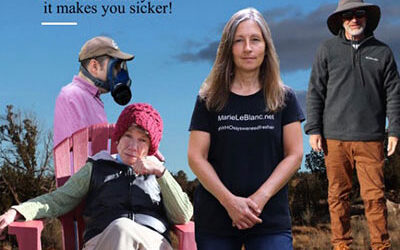
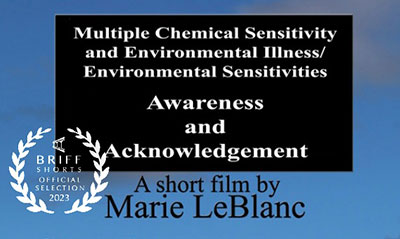
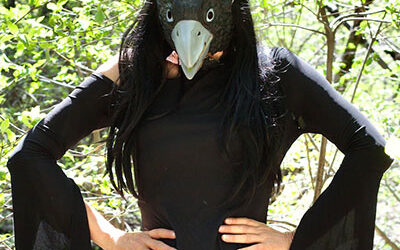
0 Comments